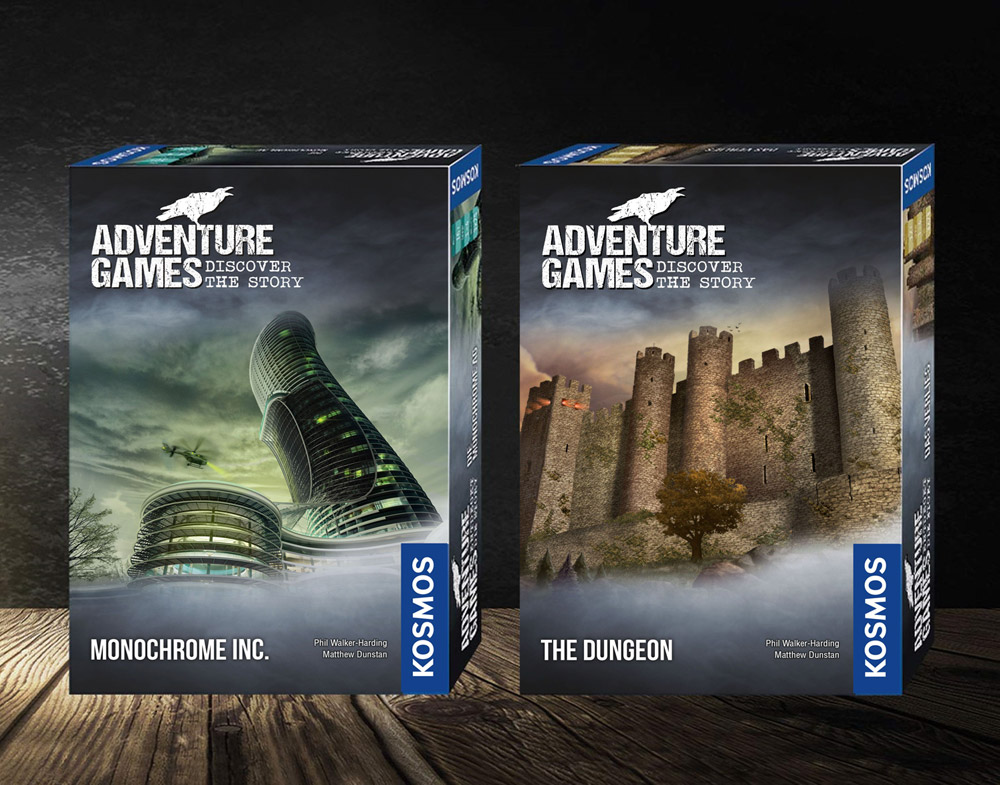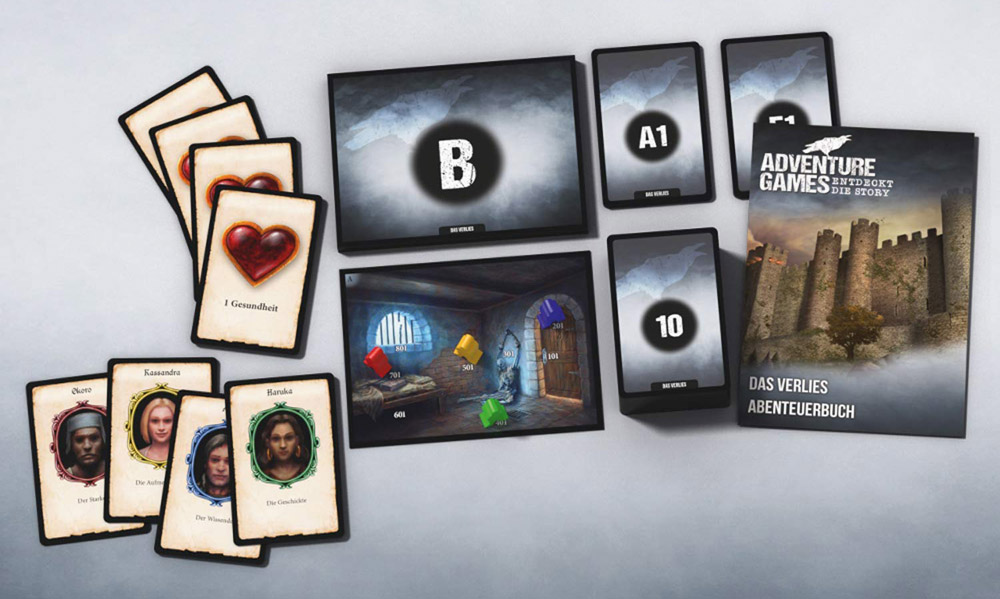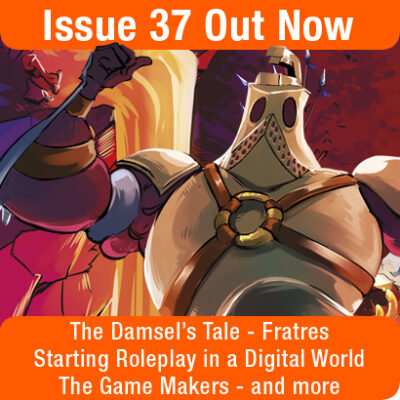The first two entries in the Adventure Games series offer an immersive experience relying on secret path choices and deduction.
Adventure Games are the newest series in a KOSMOS line that brings puzzle solving scenarios into board gaming. Similar to the Exit series, Adventure Games offer a point-and-click feel without a computer interface. However, the similarities stop there.
Phil Walker-Harding and Matthew Dunstan have designed a series that borrows just as much from classic children’s literature, particularly the Choose Your Own Adventure novels. The two games –The Dungeon and Monochrome Inc. – come with a set of locations, adventure cards, and various missions, endings, and accessories that help set up each game world. Players will choose one of the four available characters and set them up in the first location. Each location will have particular areas that are numbered which can be explored. Players will use the story guide to read the entries for these locations. As players begin to cooperative explore their surroundings, they’ll discover items or penalties within the adventure card deck that will be added to their collection. These adventure cards can be combined together to either create a new item or situation, or with a location to create a new action at that space that advances the story. The Dungeon and Monochrome Inc. each plays over the course of three chapters, lasting no more than 90 minutes per game.

Of course, each game within the series diverges and showcases both the strengths and weaknesses of Walker-Harding and Dunstan’s collaborative design. The Dungeon is nearly a simplified version of 7th Continent in its presentation. Players are prisoners in the titular dungeon, seeking to move from room to room to uncover where they are, how they got there, and what their purpose is. Players must manage their health while finding resources and moving from room to room in a traditional dungeon crawler. The mechanics function similarly to a point-and-click gaming experience with players having to use items found in one room with locations and items discovered in another area of the dungeon.
The story is far more connected to the Choose Your Own Adventure narratives, or even those from a Nancy Drew and Hardy Boys novel. Each game misses an opportunity to leverage character attributes but considering how seamless exploration and discovery are, it’s not necessary. This helps to create a cohesive story within The Dungeon that is unfolds through the game. Each chapter does a great job of setting up the goal, interweaving it through the plot, and having a bit of fun along the way. Though the location cards do not quite match the story’s atmosphere, the game play feels polished and does more than provide a proof of concept for the Adventure Games series. The numbering system of combining adventure cards with other cards or numbered locations within the story guide is also handy, though it will take some time to leaf through the booklets to find the flavor text.
However, Monochrome Inc. suffers where The Dungeon excels. It tells the stories of a big pharmaceutical company and its potentially nefarious dealings. Players are a group of sophisticated thieves sent into the corporation at night to find out about Monochrome’s supposed wonder drug. Unlike The Dungeon, movement across locations is freer at the beginning of the game. However, the story of Monochrome, Inc. is disjointed, jolting, and has some noticeable plot holes. While not necessarily easier, The Dungeon does a remarkable job of guiding players through its lair. It may also come down to the theming, where The Dungeon captures the feeling of a dungeon crawler without relying too heavily on its tropes to just move action along, but has enough of those tropes that players own sense of adventure helps them make educated choices. Monochrome Inc. does a better job at designing the locations to feel like a mega-corporation at night and ratcheting up the number of decisions, but it is not reflected well in the scattered story, which does not ideally piece together its narratives across chapters.

Play times also vary differently between the games despite each promising no more than 90 minutes per their three chapters. Each game’s first chapter is succinct, lasting no more than 45 minutes for players familiar with escape room and secret path mechanics. But due to the gaps in the story and some poorly written flavor text on cards and in the guide, Monochrome Inc. has a long second chapter that can drag on past two hours before giving way to an all-too-quick third chapter. Much of the game’s meatiness is within that second chapter and it can feel burdensome at times. The Dungeon’s story is evenly distributed, so that each chapter flows well into each other even as the puzzles and exploration increase. However despite its flaws, Monochrome Inc. has a more compelling story arc.
Mechanically, both games succeed at their goals. Walker-Harding and Dunstan have done well to make the games easy to unbox and play, and the guide is very deliberate in presenting back-up plans in case situations and scenarios have already played out, and the rules have clues for those who are truly stumped.
In the end, these first entries into the Adventure Games series are worth the time investment. Unlike escape room games, there is some replayability thanks to forking paths and options, particularly in Monochrome Inc. There is also room for growth, which means new designers and ideas can utilise the existing system without having to confuse potential players by reinventing the games but merely improving upon the symbiosis between theme, mechanics, and story.
Adventure Games: The Dungeon and Monochrome Inc. are available now online and from good tabletop retailers.




